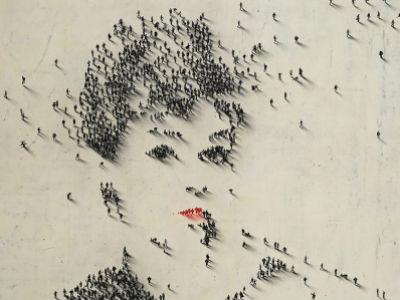In 2009 a small theatre company in the UK, the Theatre Royal Stratford East, began a community consultation project called Open Stage. The communities in and around Stratford East were asked what they wanted to see on stage and a group of volunteers gathered information, developed networks and skills, and became a bridge connecting new audiences to the theatre. The project ran for a couple of years and culminated in a co-curated six-month theatre season in the run up to the Olympic Games.
The Open Stage project is an example of what Charles Leadbeatter describes as a cultural shift: arts organisations are moving away from doing things to and for people and instead shifting to ‘the art of with’. There are examples throughout Australia of various kinds of participative arts practice and there is some evidence that innovative arts organisations are seeking to build meaningful interaction and participation by new people, and new audiences.
Arts participation entails a radical re-conceptualisation of the arts in the sense that it re-figures how arts organisations operate (and for whom), recognising that audiences may no longer be happy to be passive spectators (of the sit-down, shut- up and listen variety), but rather may be seeking active and engaged creative experiences. This is not to suggest that spectating is a lesser form of audience engagement, but rather acknowledges that many arts audiences are now seeking more diverse forms of interaction.
And if participative arts practice becomes increasingly central to the work of arts organisations, this has consequences for resource allocation, aesthetics, programming, leadership and management. Arts leaders in the UK, like those involved in the Stratford East example, have become interested in building porous organisations with loose organisational boundaries which engage audiences as active participants. The traditional idea of the arts organisation as a citadel run by a few insiders who produce work for a closed group of cognoscenti is up for grabs.
So, how do cultural organisations extend their reach? What business models will the cultural sector need to discover new ways of engaging? How will the audiences of the future interact with the cultural sector? We know these questions are important and that there is a global trend towards co-creation as a hallmark of new ways of working to innovate and adapt, not just in the arts but across a range of industries and sectors.
And with these reconceptualised ideas about inclusivity as a core activity and priority, the arts and cultural sector is doing two new things. First, it is reaching out to form networks with new and broader audiences; and second, it is focusing on deepening the audience’s experience of the arts. In this way, organisations are not only making the arts more accessible and relevant, they are engaged in developing and/or co-curating new work that captures and builds on community creativities. This is not at the expense of artistic excellence or integrity; rather the arts participation project enhances exchange, dialogue, plurality and diversity to build new and adventurous arts experiences.
Deakin University’s Arts Participation Incubator (API) has been exploring many of these issues since it kicked off in Sept 2012. With advice from its industry reference group, the API has been looking at ways arts leaders can enliven cultural organisations through participative audience engagement. Since September, the API has run three events:
- The 10 x 10 Showcase profiled some of the great diversity and range of participative arts projects around Australia. Facilitated by the Artistic Director of the Queensland Theatre Company, Wesley Enoch, the event highlighted the work of some key arts organisations including: Museum of Contemporary Art, Melbourne City Council, the Arts Centre Melbourne, the Next Wave Festival, Contact Youth theatre, Arena Theatre, Casula Powerhouse, and MONA.
- The second event, held in October at MONA in Tasmania, looked at issues around the use of technologies for enhancing arts participation, audience engagement and interactivity. Speakers included Nic Whyte, one of the creators of MONA’s interactive hand-held ‘O’ device, Stuart Buchanan from the Nest, and Sam Haren and Dan Koerner from the Border Project and the newly formed Sandpit.
- The third event, ‘The Art of With’, is a conversation about co-curation, to be held on the 28 November at Deakin University’s Melbourne City Centre. Participants will hear from a panel of guest speakers discussing an aspect of arts co-curation including questions such as: How do we measure success in participative arts? Facilitated by Lenine Bourke from Contact Arts QLD, speakers include Kelli McCluskey, PVI Collective, Perth; Caroline Martin, Bunjilaka Aboriginal Culture Centre, Melbourne; Matt Jones, Federation Square, Melbourne; and Brian Ritchie, MONA FOMA, Hobart.
For more information visit the Arts Participation Incubator.






